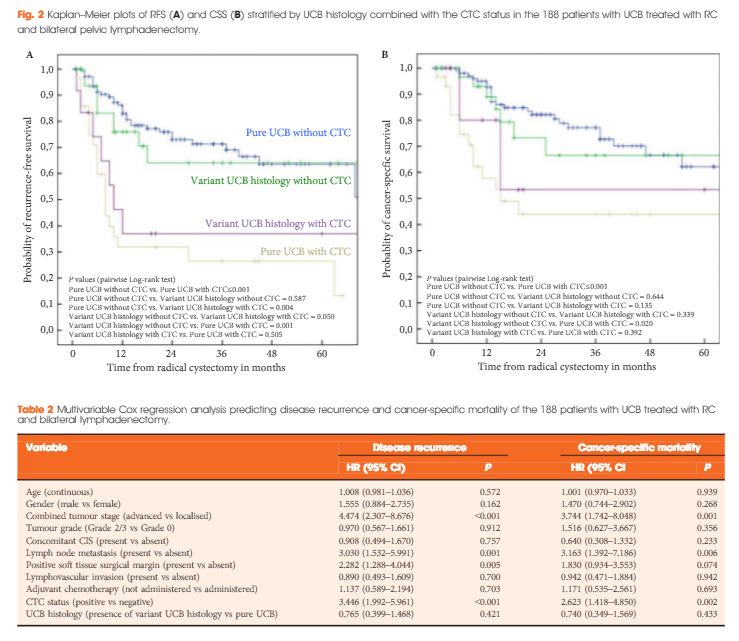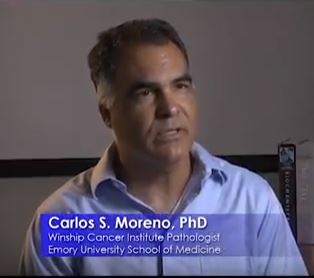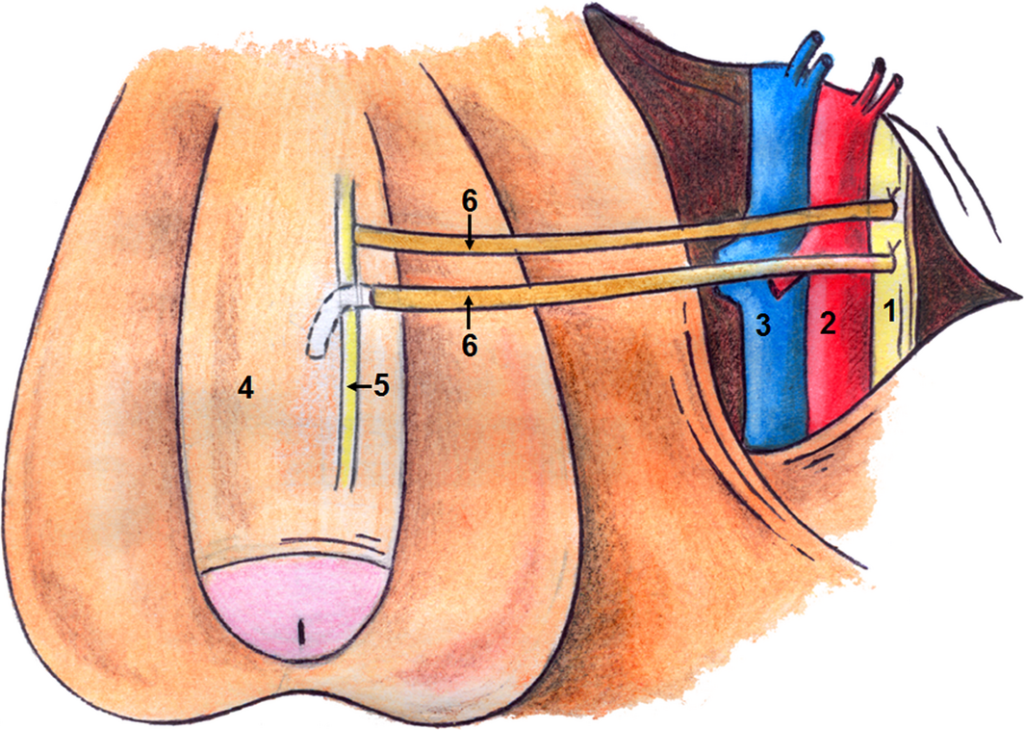
Article of the Week: Detection and oncological effect of CTC in patients with variant UCB histology treated with RC
Every week the Editor-in-Chief selects an Article of the Week from the current issue of BJUI. The abstract is reproduced below and you can click on the button to read the full article, which is freely available to all readers for at least 30 days from the time of this post.
In addition to the article itself, there is an accompanying editorial written by a prominent member of the urological community. This blog is intended to provoke comment and discussion and we invite you to use the comment…

Editorial: Biomarkers for UCPPS: is there light at the end of the tunnel?
Management of urological disease begins with an accurate diagnosis. For this purpose, urologists have PSA and biopsy for prostate cancer, bacterial culture for UTI, CT scan for urolithiasis, cytology, cystoscopy and biopsies for bladder cancer, semen analysis for infertility and the list goes on. We have been able to use these accurate diagnostic markers to kill, maim, remove, fragment or burn our way to therapeutic success. Unfortunately, this has not been true in the case of urological chronic…

Editorial: Detection and oncological effect of CTC in patients with variant UCB histology treated with RC
I read this article from Hamburg-Eppendorf with great interest [1]. The treatment of invasive urothelial carcinoma has not significantly progressed in the last 30 years, with survivals currently that are little changed since the first introduction of multi-drug platinum-based chemotherapy in the 1980s. Moreover, the broad application of chemotherapy, whether it is in the preoperative or postoperative domains, is associated with significant morbidity in this generally elderly population. As 60–80%…

Article of the Week: Evaluation of Sig24, a 24-gene signature
Every week the Editor-in-Chief selects an Article of the Week from the current issue of BJUI. The abstract is reproduced below and you can click on the button to read the full article, which is freely available to all readers for at least 30 days from the time of this post.
In addition to the article itself, there is an accompanying editorial written by a prominent member of the urological community. This blog is intended to provoke comment and discussion and we invite you to use the comment…

Editorial: Predicting outcome: role of gene signatures
Pathological assessments, such as Gleason grading, which is a strong clinical predictor of prostate cancer progression [1], have a role to play in predicting the outcome of a patient's response to therapy. The addition of PSA and TNM staging are further used to inform appropriate treatment strategies in patients who are at low, intermediate and high risk of disease progression. Unfortunately, approximately 30% of men with intermediate-risk prostate cancer will fail to be cured by surgery or radiation…

Video: Evaluation of a 24-gene signature for prognosis of metastatic events and PCa-specific mortality
Evaluation of a 24-gene signature for prognosis of metastatic events and prostate cancer-specific mortality
Kathryn L. Pellegrini*†, Martin G. Sanda*†, Dattatraya Patil*†, Qi Long†‡§, Marıa Santiago-Jimenez¶, Mandeep Takhar¶, Nicholas Erho¶, Kasra Yousefi¶, Elai Davicioni¶, Eric A. Klein**, Robert B. Jenkins††, R. Jeffrey Karnes
‡‡ and Carlos S. Moreno†§§§
*Department of Urology, Emory University School of Medicine, †Winship Cancer Institute,…

Article of the Week: Treatment of ED after RP using nerve grafts and end-to-side somatic-autonomic neurorraphy
Every week the Editor-in-Chief selects an Article of the Week from the current issue of BJUI. The abstract is reproduced below and you can click on the button to read the full article, which is freely available to all readers for at least 30 days from the time of this post.
In addition to the article itself, there is an accompanying editorial written by a prominent member of the urological community. This blog is intended to provoke comment and discussion and we invite you to use the comment…

Editorial: Somatic-autonomic neurorrhaphy for erectile function restoration after radical prostatectomy
The authors of the present study [1] are to be commended for their efforts in describing their 3-year experience with a novel bilateral end-to-side somatic-autonomic neurorrhaphy intended to restore erectile function at least 24 months after radical prostatectomy, after which spontaneous return of erectile function is unlikely [2]. Using the principles of brain plasticity and neurotization, the authors describe, for the first time, bilateral sural neurografting between the femoral nerve and…

Article of the Month: GreenLight XPS for treating benign prostatic hyperplasia
Every Month the Editor-in-Chief selects an Article of the Month from the current issue of BJUI. The abstract is reproduced below and you can click on the button to read the full article, which is freely available to all readers for at least 30 days from the time of this post.
In addition to the article itself, there is an accompanying editorial written by a prominent member of the urological community. This blog is intended to provoke comment and discussion and we invite you to use the comment…

Editorial: Celebrating BAUS and NICE Guidance
On behalf of the BAUS Council, I am delighted to write this editorial looking forward to the 73rd annual meeting of the BAUS, which will be held in Glasgow from 26 to 28 June. In response to feedback we had from delegates following BAUS 2016 and the successful European Association of Urology meeting in London this March, we have changed the format and duration of the meeting, ensuring that it has a distinct feel, reflecting the best of British Urology.
With Brexit looming and the precarious…
